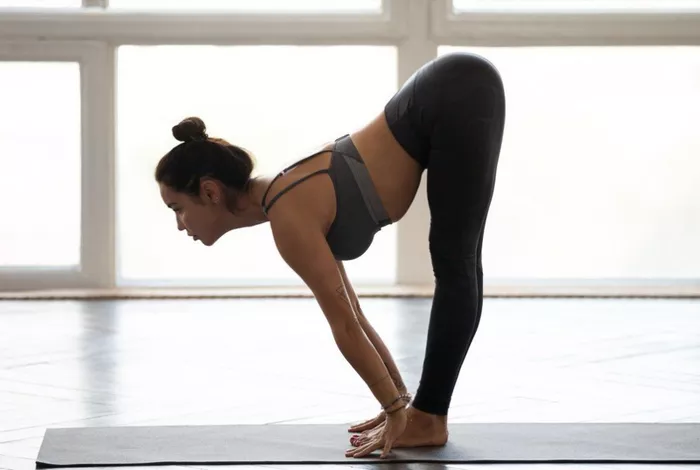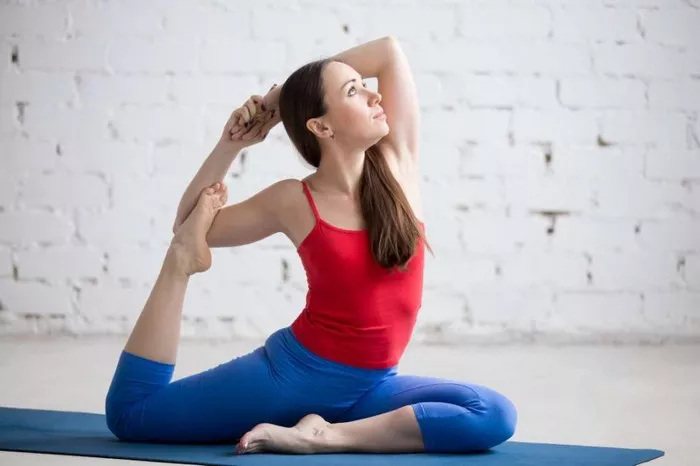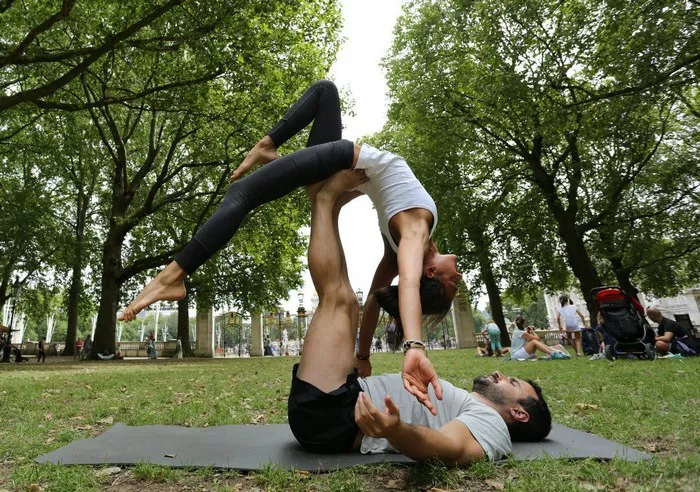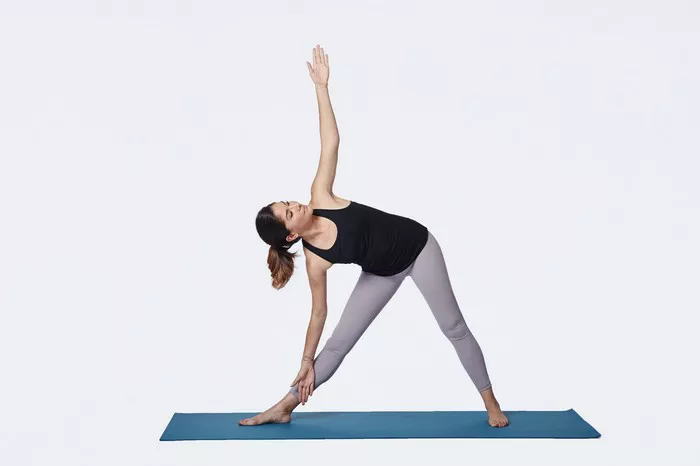Sciatica, a condition characterized by pain radiating along the sciatic nerve, can be debilitating for those who suffer from it. While yoga is often recommended for its gentle stretching and strengthening benefits, certain poses may exacerbate sciatic pain rather than alleviate it. Understanding which yoga poses to avoid with sciatica is crucial for managing symptoms and preventing further discomfort. In this comprehensive guide, we delve into the intricacies of sciatica, explore why certain yoga poses can be problematic, and provide precise answers regarding which poses to steer clear of to safeguard against exacerbating symptoms.
Understanding Sciatica: Causes and Symptoms
Before delving into specific yoga poses, it’s essential to grasp the fundamentals of sciatica. The sciatic nerve, the longest nerve in the body, runs from the lower back down through the buttocks and into the legs. When this nerve becomes compressed or irritated, it can lead to a range of symptoms collectively known as sciatica.
Common causes of sciatica include:
1. Herniated Disc: When the soft inner material of a spinal disc protrudes outward and irritates the nearby nerves, it can result in sciatic pain.
2. Spinal Stenosis: Narrowing of the spinal canal can put pressure on the nerves, including the sciatic nerve, leading to discomfort.
3. Piriformis Syndrome: The piriformis muscle, located in the buttocks, can compress the sciatic nerve if it spasms or tightens.
4. Degenerative Disc Disease: Wear and tear on the discs between the vertebrae can cause them to lose their cushioning ability, leading to nerve compression.
5. Spondylolisthesis: This condition occurs when a vertebra slips out of place and compresses the nerves, including the sciatic nerve.
Symptoms of sciatica may include:
1. Pain: Sharp, shooting pain that radiates from the lower back down one or both legs.
2. Numbness: Tingling or numbness in the affected leg or foot.
3. Weakness: Difficulty moving the leg or foot, often accompanied by muscle weakness.
4. Burning Sensation: A sensation of heat or burning along the path of the affected nerve.
Given the diverse causes and symptoms of sciatica, it’s imperative to approach yoga practice with caution, especially when certain poses may exacerbate discomfort.
Yoga and Sciatica: Finding Balance
Yoga is widely recognized for its ability to promote flexibility, strength, and relaxation, making it an appealing practice for individuals seeking relief from sciatic pain. However, not all yoga poses are suitable for those with sciatica. While gentle stretching can help alleviate tension and improve mobility, certain poses that involve extreme flexion or compression of the spine may worsen symptoms.
When practicing yoga with sciatica, it’s essential to prioritize:
1. Gentle Movement: Focus on gentle, controlled movements that promote flexibility without straining the back or aggravating the sciatic nerve.
2. Core Strengthening: Strengthening the core muscles can provide support to the spine and alleviate pressure on the sciatic nerve.
3. Mindful Awareness: Pay close attention to how your body responds to each pose, and avoid any movements that cause sharp or shooting pain.
By approaching yoga with mindfulness and awareness, individuals with sciatica can enjoy the benefits of the practice while minimizing the risk of exacerbating their symptoms.
Yoga Poses to Avoid with Sciatica: Precise Guidance
While yoga offers numerous benefits for overall well-being, certain poses may exacerbate sciatic pain by placing undue stress on the lower back and pelvis. To prevent discomfort and potential injury, it’s essential to avoid the following yoga poses if you have sciatica:
1. Forward Folds: Poses such as Uttanasana (Standing Forward Bend) and Paschimottanasana (Seated Forward Bend) can exacerbate sciatic pain by compressing the lumbar spine and stretching the hamstrings. Instead, opt for gentle hamstring stretches that maintain a neutral spine, such as Supine Hamstring Stretch or Modified Uttanasana with Bent Knees.
2. Deep Backbends: While backbends can be beneficial for opening the chest and improving posture, deep backbends like Urdhva Dhanurasana (Wheel Pose) or Camel Pose can strain the lower back and aggravate sciatica. Consider practicing gentle backbends, such as Bhujangasana (Cobra Pose) or Sphinx Pose, with a focus on lengthening the spine rather than compressing it.
3. Twists: Twisting poses, such as Ardha Matsyendrasana (Half Lord of the Fishes Pose) or Marichyasana (Seated Twist), can exacerbate sciatic pain by compressing the lumbar spine and putting pressure on the sciatic nerve. Instead, opt for gentle supine twists or seated twists with modifications to avoid excessive rotation of the lower back.
4. Deep Hip Openers: While hip-opening poses can help alleviate tension in the hips and lower back, deep hip openers like Pigeon Pose or Fire Log Pose may exacerbate sciatic pain by placing excessive pressure on the piriformis muscle and sciatic nerve. Instead, practice gentle hip stretches that focus on releasing tension without overstretching the piriformis, such as Supine Figure-4 Stretch or Thread the Needle Pose.
5. Standing Poses with Forward Bends: Standing poses that involve forward bending, such as Uttanasana (Standing Forward Bend) or Prasarita Padottanasana (Wide-Legged Forward Bend), can aggravate sciatic pain by placing strain on the lower back and hamstrings. Instead, practice standing poses that focus on lengthening the spine and engaging the core muscles, such as Tadasana (Mountain Pose) or Virabhadrasana II (Warrior II Pose).
6. Unsupported Headstands or Shoulder Stands: Inversions can be challenging for individuals with sciatica, as they may exacerbate compression in the spine and increase pressure on the nerves. Avoid unsupported headstands or shoulder stands, and opt for gentle supported inversions, such as Legs-Up-the-Wall Pose or Supported Bridge Pose, with props to alleviate strain on the lower back.
Conclusion
While yoga can be a valuable tool for managing sciatic pain and promoting overall well-being, it’s essential to approach the practice with caution and mindfulness. By avoiding certain poses that may exacerbate symptoms and focusing on gentle, supportive movements, individuals with sciatica can experience the benefits of yoga without compromising their comfort or safety. Remember to listen to your body, communicate with your yoga instructor about any pre-existing conditions or concerns, and modify poses as needed to accommodate your unique needs. With a mindful approach and a focus on gentle movement, yoga can become a valuable part of your self-care routine, supporting your journey toward health and healing.
























